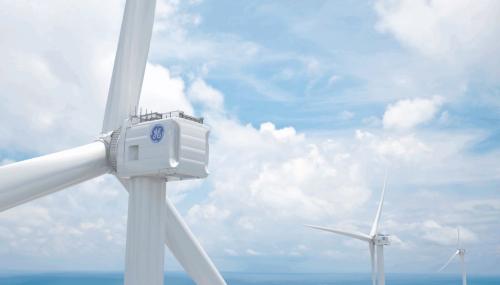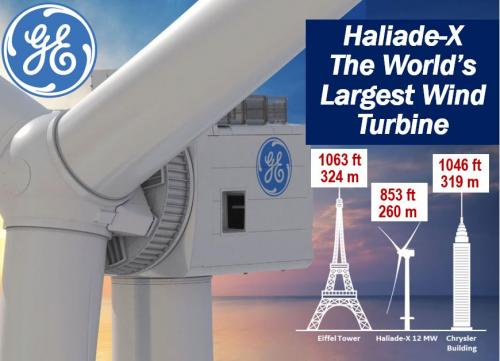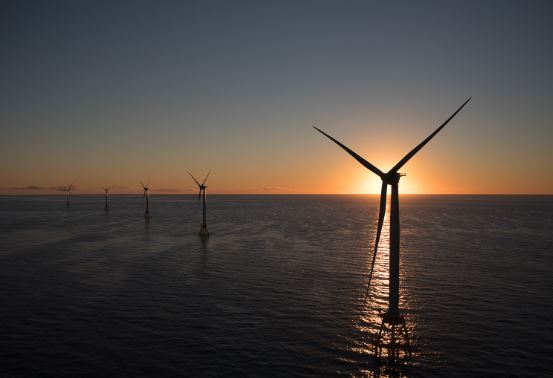
GE (General Electric Company), the New York-based multinational conglomerate, is building the world’s largest wind turbine in the Netherlands. GE is building the Haliade-X 12 MW on the outskirts of Rotterdam.
The Netherlands is famous for its windmills. The country has 991 of them. People come to the Netherlands from all over the world to see them. They will soon have to compete for attention with their new giant cousin, the Haliade-X.
Haliade-X has a giant rotor
The Haliade-X has a rotor whose diameter, at 220 meters (722 ft), is twice the length of a football field. From its blade tip to its base, it stretches 260 meters (853 ft). That is almost three Statues of Liberty, one on top of the other.
The giant rotor allows engineers to capture more wind. It also increases the turbine’s capacity factor. Sometimes there is no wind or not enough to turn the blades. Capacity factor describes how much power the turbine can generate annually at a given site versus what it could generate if it ran at full power non-stop.
The world’s largest wind turbine has a capacity factor of 63%. This is five to seven percentage points greater than its largest rival turbines.
Vincent Schellings, the leader of the development team, said:
“Basically, every point of capacity factor is worth $7 million per 100 megawatts for our customers. That’s a nice upside.”

Haliade-X can supply 16,000 homes
Just one Haliade-X wind turbine will generate 12 megawatts of power. That is enough to supply 16,000 homes with electricity. According to GE engineers’ calculations, one Haliade-X in a typical North Sea site could generate 67 gigawatt-hours per year.
GE Renewable Energy and Future Wind will build the prototype on land, even though it is an offshore turbine. The North Sea gets extremely rough, especially during the winter months. GE says the idea was to make access easier for its engineers during the testing period. Testing will last five years.
John Lavelle, Vice President at GE Renewable Energy, said the windy flatland around Rotterdam will expose the turbine to “the most drastic weather conditions.” Lavelle is also CEO of GE’s Offshore Wind unit.
Commercialization of Haliade-X
GE is aiming for commercialization of Haliade-X in 2021. It will need to obtain a type of certificate. Construction will begin in the summer of this year. The company believes it will have enough time to achieve its 2021 target.
“The prototype is part of a $400 million investment in the development of the Haliade-X that GE Renewable Energy announced in March 2018. The company aims to reduce offshore wind’s cost of energy and make it more competitive.”
“Part of the project is also the development of the massive, 107-meter turbine blades. They are being designed by LM Wind Power, a subsidiary of GE Renewable Energy, and built in a new factory in Cherbourg, France. GE will build the Haliade-X’s nacelle — the part that sits on top of the tower and holds the generator and other equipment — at its factory in Saint-Nazaire, France.”
Haliade-X – a huge but doable undertaking
In an interview with GE Reports, Schellings said:
“We asked ourselves, ‘What is the biggest rotor we would still feel comfortable with?’ Then we pushed ourselves some more. From a technology perspective, it seems like a stretch.”
“But we know it’s doable. The beauty of the turbine is that it gives an edge over the competition. There’s nothing like this.”
Wind energy
Wind energy or wind power today refers to capturing the wind’s energy and converting it into electricity. We subsequently use the electricity to light and warm our homes, power electric cars, keep our streets illuminated, etc.
Humans have been using wind energy for thousands of years. We have used windmills for pumping water and grinding grain. We have also used wind energy to propel our ships and boats forward.
Today, thousands of turbines are being erected each year all over the world. When there are many turbines together in one place, we call it a wind farm.
There are wind turbines on land or out at sea. We call them onshore and offshore wind turbines (respectively).
Renewable energy
Wind energy is a type of renewable energy. In other words, the energy source never runs out – it is everlasting. ‘Everlasting,’ in this context, means within the timespan of a human being rather than a geological timespan.
Solar energy is also a type of renewable energy. The energy from the Sun, as far as we are concerned, will not end. Other types of wind energy include geothermal energy and biomass energy.
We call the energy that we capture from flowing or falling water hydropower. Hydropower is also a type of renewable energy.

